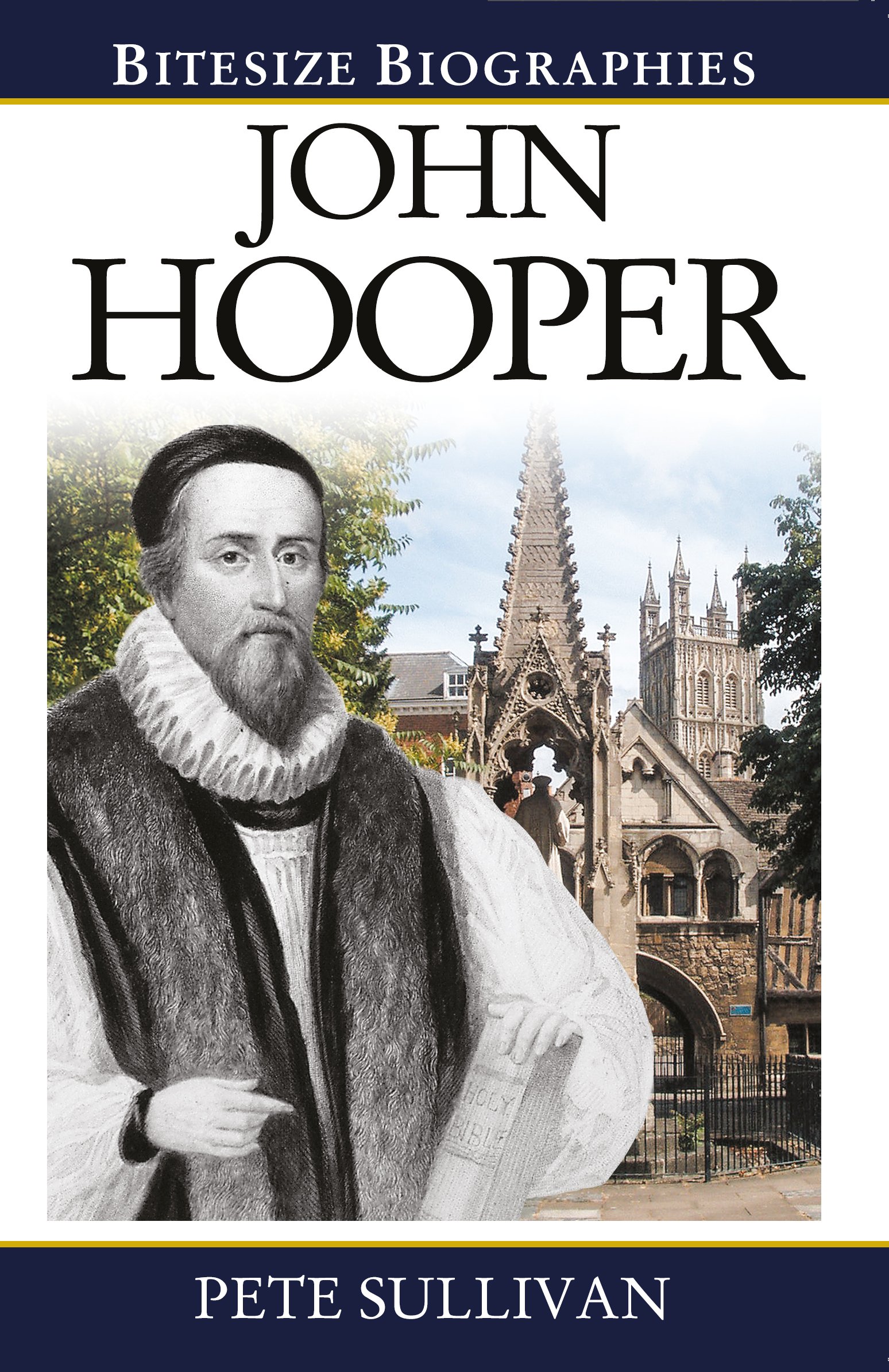Reviewed by Andre Gazal
In this very accessible biography, Pete Sullivan rapidly, but thoroughly takes his readers through a stimulating narrative of the life of the English reformer, and Marian martyr, John Hooper (1500-55), bishop of Worcester and Gloucester. Most likely because of editorial constraints, Sullivan omits details of Hooper’s early life such as his birth, childhood, and early education at Somerset as well as those related to his university studies, and instead begins his account with Hooper’s return to England from exile in Zurich in 1549, which was a pivotal year during the Reformation in that country as Archbishop Cranmer, with the full support of the young king, Edward VI (r.1547-63), and his then regent, Edward Seymour, the Duke of Somerset, was implementing a program of comprehensive ecclesiastical reform throughout the country. Towards this end, the Archbishop had invited two prominent theologians from Strasbourg, Peter Martyr Vermigli (1499-1562) and Martin Bucer (1491-1551) to assume the Regis Chairs of Divinity at Oxford and Cambridge respectively. Moreover, it was also the year in which Cranmer published and mandated for use in all the churches in England, the first edition of the Book of Common Prayer.
However, almost as soon as Hooper returned from the Continent, he found that his advanced Reformed principles came into sharp conflict with the Protestant government that had invited him back. In 1550, Hooper attacked the Ordinal as retaining too many traditionalist Catholic elements. Throughout the heart of the book, Sullivan makes very clear that Hooper very strongly held to the same use of Scripture with regards to ecclesiastical practices as did many of his Continental colleagues. In this regard, they contended that Scripture invalidated all practices which it did not explicitly mention. Hooper would bring this specifically to bear during his consecration as bishop of Worcester. First, he objected to the oath of consecration he would have to take because of its mention of St. George and other saints. Hooper’s protests of these provisions in the oath moved King Edward unilaterally to strike them from the oath. Secondly, Hooper deprecated the episcopal vestments he was expected to wear at his consecration on the grounds that they were “Romish.” Hooper’s resistance to the vestments embroiled him in controversy with Cranmer, and Nicholas Ridley (1500-55), bishop of London. The controversy also drew in Vermigli, Bucer, and Heinrich Bullinger (1504-75). Finally, after a brief term in the Fleet Prison imposed by the King’s Council, Hooper capitulated and was consecrated in the vestments. While Sullivan provides a vivid and accurate record of this famous, or perhaps more accurately, infamous controversy, he does not seem to state explicitly the reason why Cranmer, Ridley, and John Ponet (1514-556) opposed him as well as the reason for Bullinger, Bucer, and Vermigli advising him to submit to the custom. All held to the doctrine of royal supremacy which had been codified into law in 1534 (The Act of Supremacy), and thus served as the institutional foundation of England’s national church. Though all the parties involved (Except Hooper, of course), including Vermigli, Bucer, and Bullinger, who personally sympathized with Hooper, regarded the garments themselves as things “indifferent,” they all believed that royal ecclesiastical authority extended to matters “indifferent,” meaning that if the monarch deems it appropriate the mandate the use of such vestments, then the clergy, who are subordinate to the monarch, must submit and wear them. Since the King’s Council, on behalf of young King Edward, was requiring them, then it was Hooper’s godly responsibility to submit and wear them.
Sullivan furthermore calls attention to Hooper’s concern for social justice as evidenced in his condemnation of the nobility’s treatment of the poor, and advocacy for reform of prison conditions. He also provides two very informative chapters on Hooper’s pastoral ministry as a bishop as seen in his preaching, pastoral care, and discipline of clergy and laity alike. In those chapters touching on Hooper’s arrest imprisonment, trials, and execution at the stake, Sullivan calls attention to the fact that Hooper did not support Jane Grey against whom he considered the legal heir—his eventual executioner, Mary Tudor (r.1553-58). Throughout his discussion of Hooper’s imprisonment, Sullivan notes a very interesting, but little-mentioned debate between Hooper and his longtime nemesis, Bishop Stephen Gardiner of Winchester (1483-1555) concerning suicide as a result of a Protestant judge, James Hales, commission of the act. Finally, Sullivan strikingly describes Hooper’s last days as a prisoner leading to his execution at Glouscester through his artful incorporation of excerpts from letters both to and from the convicted, soon to be martyred former bishop.
Other helpful features in the book are the chronological table of Hooper’s life as well as the many photographs of places relevant to Hooper’s life.
John Hooper provides a clear, readable, account of one of the most outspoken as well as controversial figures of the English Reformation. It is suitable for general readers of all educational backgrounds who heretofore have been unacquainted with the English Reformation. Furthermore, it is an excellent supplementary resource for homeschooling history curricula dealing with this period in history. Sullivan is thus to be commended for bringing to a broader audience the life and legacy of this Reformation prophet.
Andre Gazal
North Greenville University
Nicolet Bible Institute
